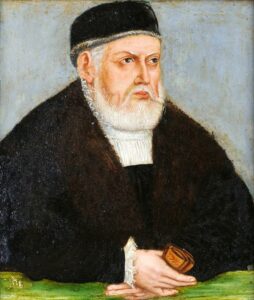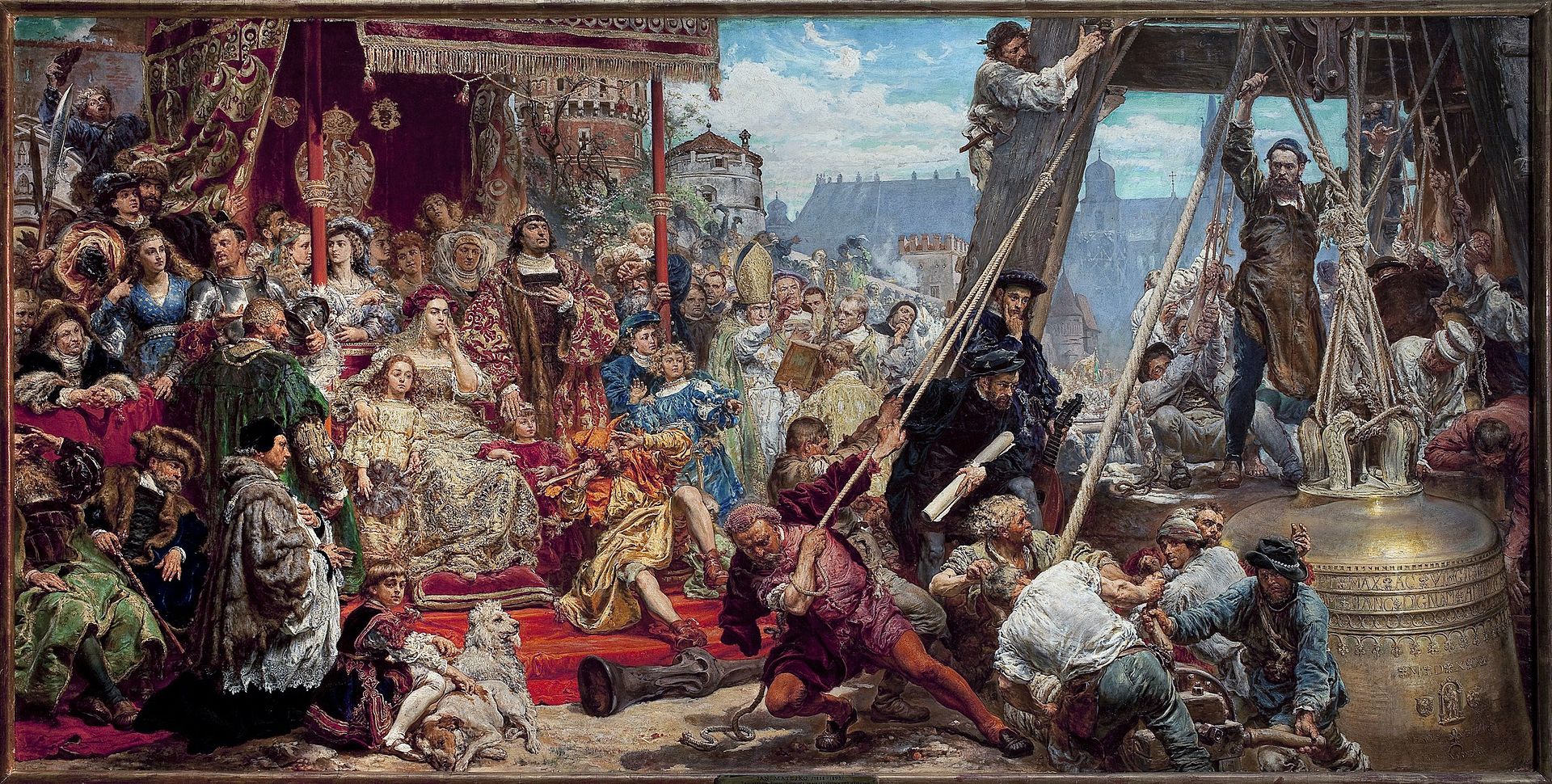Military victories will always hold a prominent place in the collective memory. This in part is due to their nature. When an enemy invades our country, the efforts the political community is forced to take is an existential challenge. The alternative, a defeat, would mean the deaths of many people and the country’s loss of independence. Thus the service of citizens in the midst of war comprises a distinct category of patriotism. On the field of battle, one is defending and fighting for everything.
by Michał Rzeczycki
Historical memory, however, based primarily on victories in warfare as it is, distorts the true nature of politics and promotes only those civic attitudes that aren’t called into play in peacetime. That are necessary, though, in order to win when things go head to head. As winning a bout is the measure of a wrestler’s training, so victory in battle is the measure of country’s plenitude. Although talent in command and the brilliant intuition of tactics rightly arouse admiration, they hold no value if resources are lacking with which to achieve the goals laid out. The real test of a ruler or a government’s magnitude is not the defeat this or that enemy, but securing benefits for society even when the state is at peril and seems to lack the needed resources.
The reign of Sigismund the Old, from 1507 to 1548, began under very trying circumstances. The Teutonic Order, while not as powerful as it had been a century before, remained a threat. The Grand Duchy of Moscow was the greatest enemy, its rulers stubbornly pursuing the program of “collecting Ruthenian lands,” which were mostly parts of Lithuania connected with the Kingdom of Poland by the ties of personal union. However, the main difficulty King Sigismund had to face was extremely poor state finances. With no money, one will likely win no war.

The basic income stream for the Polish Republic were profits from royal holdings, which included landed estates, incomes from townships, and rents and profits from mines. The royal domain’s expanse and its economic management were fundamental to wealth held in the state treasury. However, the fifteenth and sixteenth centuries had been a time of economic and military breakthrough, resulting in significant depletion of the dominions of the monarchy. In the first place, as a result of emerging capitalism, the economy was gradually shifting from agriculture to the exchange of commodities and money. While two grosze from the fields, which the nobility paid by virtue of the Koszyce (Košice) privilege from 1374, was enough at the beginning (about 10 percent of income), over time inflation had significantly lowered the value of this tax. Second, the significance of the knighthood available to be called up as militia had decreased, with the mercenary army gaining importance and its maintenance requiring increased financial expenditure. For these reasons, policy-making costs grew and the economy struggled with the demands of change, leaving the state in the position of not always being able to come up with the amounts of money required to face challenges.
Therefore, with each successive demand, such as another war with the Teutonic Order, the ruler needed a quick windfall. Hypothecation was one way to secure this, which was also a form of credit. It was not possible to loan, with lending at interest treated as usury and severely condemned by the church. One solution was to pledge some holdings, for example a town, which for an agreed sum of money would then be managed by the lender. The basic form of the mortgage contract was the so-called antichresis, consisting of the return to the creditor of property along with income until the debt is repaid. The interest we pay to the bank today with each loan installment, in the case of the aforementioned contract, was hidden in incomes, which the lender accessed freely as long as the ruler was unable to repay the value of the pledge.
The practice of pledging holdings was not harmful as long as it happened infrequently, and the damage to state revenues was not permanent, thanks to which the rented pledge could be quickly repaid. But problems mounted as new political challenges forced rulers to loan with more frequency. It became a vicious circle. Money from pledges was used up rapidly for immediate needs, state revenues decreased more and more so there was no money with which to release leases from property owners’ hands. As a result, the total number of property complexes managed by King Sigismund at the beginning of his reign had reduced to just nineteen over the fifteenth century, and the total debt on the royalties was about 675,000 zlotys.

To illustrate the scale of that amount, we can compare it with the example of Sambor, with some four thousand citizens, near Lwów. Its annual income in 1538 amounted to 3,860 zlotys, accounting for less than half a percent of the entire debt of the Polish Republic.
In each act that King Sigismund took immediately after accession to the throne, he was determined and focused on repairing the devastated royal domains. It is noteworthy that the monarch met with a great understanding among the gentry, who had long noticed the problem and wanted to halt the practice of pledges with the right law. The nobility, however, was the main opponent, finding most profitable the maintenance of pledged royalties, and its resistance had to be broken. The theoretical basis for the act taken up by the king was established in 1507 by Stanisław Zaborowski, a priest and Crown Treasurer, who in his Tractatus de natura iurium et bonorum regis (Treaty on the Nature of Crown Rights and Goods) strongly emphasized the moral and legal unacceptability of detaching any part from the entire domain of Crown property, and he threatened those still holding leases with posthumous punishment by God. Today such anathemas may seem unconvincing, but back then they had some effect. An example of this may be Piotr Szafraniec, the Castellan of Wiślica, who died in 1508, and who on his deathbed had relinquished two thousand zlotys saved on the rent from the town of Sochaczew.
King Sigismund also found devoted, talented, wealthy and often brave associates. For obvious reasons, the release of pledges required money, which the treasury lacked. Townspeople of Kraków such as Jan Boner, who provided the king with credit, helped in this matter. Thanks to his help, the new ruler could focus on regaining control over the most profitable holdings, such as salt mines in the regions of Małopolskie and Ruthenia. Without Boner’s support, his personal contacts and his property, implementing the royal plans would not have been possible. This higher recognition is due to enormous devotion demonstrated by the burgher of Kraków, who decided to develop a cooperation with the royal treasury, although he was aware of the poor state of the state’s finances, and of failures that previous rulers had suffered while trying to restore the Republic’s financial well-being.

The king, in order to free the state domain from pledges, had several tools at his disposal. First, all documentation was controlled and unlawful provisions were closed. It was the first phase of King Sigismund’s plans, requiring the least investment and giving the most rapid results. In this way, income was regained from the saltworks of the southern region of Małopolska was regained. Second, the return of goods was negotiated individually with individual property owners.
Although the king could abolish main accountings, he needed to take into account the good will of pledgees and their social positions. Renegotiating contracts, therefore, became a good solution. The king either paid part of the amount due then fixed the date of full repayment, or upon payment of part of the pledge, the remainder of the debt was arranged into installments due. Often, however, trustees decided to waive the pledge. Third, a new type of mortgage contract was introduced, a so-called extenuation, consisting of the fact that the borrower was obliged to return property to the domain when income from that property covered the borrowed sum of money. Thanks to this, it became possible to break the vicious circle created by the earlier form of pledge, while at the same time getting a loan without fear of permanently diminishing the state’s income.
Thus King Sigismund the Old’s policy, which he carried out for over forty years, was a resounding success. Here, numbers are the best proof, and they definitely favor Sigismund’s policy evaluation. The king managed to cancel pledges on royal properties to the amount of over 325,000 zlotys, accounting for almost half the total debt. In the meantime, a significantly modernized system of fiscal control was introduced on royal estates, their profitability was increased and the office was reformed. This for years was a lasting, measurable heritage of King Sigismund the Old. And it must be remembered that, at that same time, the king succeeded in winning the war against the Teutonic Order – which in 1525 was secularized and became a fiefdom of the Republic – as well as repelling invasions by Moscow at the Battle of Orsha in 1514 and by the Moldavians at the Battle of Obertyn in 1531, which led to the reconquest of Pokuttia, a historical area of East-Central Europe, between the upper Prut and Cheremosh Rivers in Ukraine today. Although those campaigns could have greatly increased the state’s debt, King Sigismund both won them and also left the Republic considerably richer than when he took the throne. If we recall what the king had to surmount at the start of his reign, and if we consider the scale of political challenges fairly, it’s hard not to bow to this ruler, characterized as he was by reason and prudence.

Military victories are momentous and spectacular, but rarely turn into sustainable capital for the future. It is a different case with tedious, less thrilling work along the lines of the work that had to be done to rebuild the royal domains. Thanks to that work, the state gains strength and a firm foundation for the future. That is why Łukasz Górnicki, who lived in the sixteenth century, spoke thus about Sigismund, the penultimate Jagiellonian ruler: “Not a strict reign, but a handsome one of King Sigismund the First; his wisdom, stability, happiness, great victories over his enemies and other great royal virtues left to Sigismund Augustus a peaceful kingdom, and in the enemies of the Crown he left great fear, leaving this world on Easter Day, before the great mass, in the year 1548.”[1]
Author: Michał Rzeczycki
Translation: Alicja Rose & Alan Lockwood
[1] Łukasz Górnicki (1527 – 1603): humanist of the Polish Renaissance, poet, political commentator, secretary to and chancellor of Sigismund August of Poland.
Ł. Górnicki, “Dzieje w Koronie Polskiej” [in:] Pisma, vol. 2, Państwowy Instytut Wydawniczy, Warsaw, 1961, p. 569.





